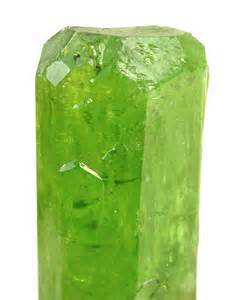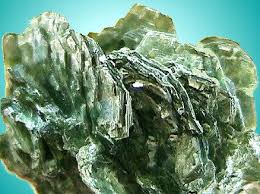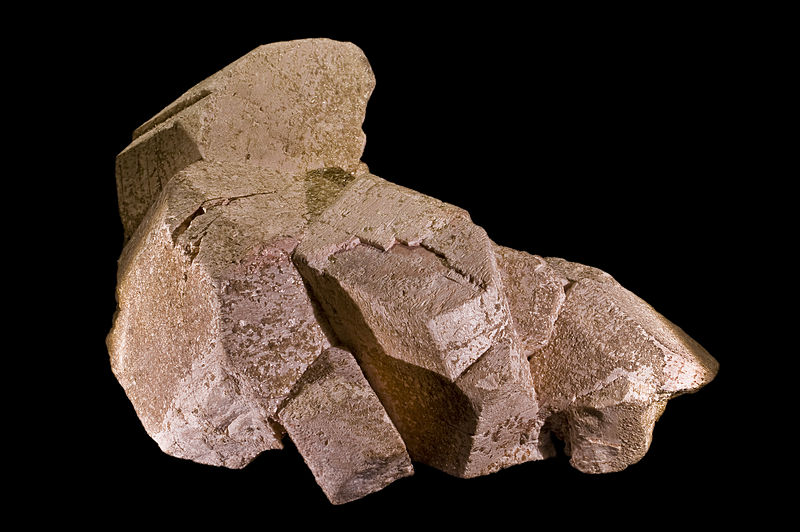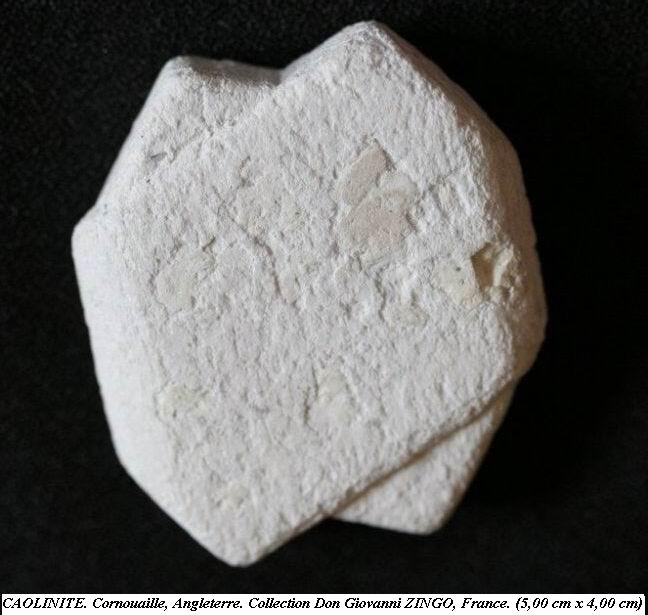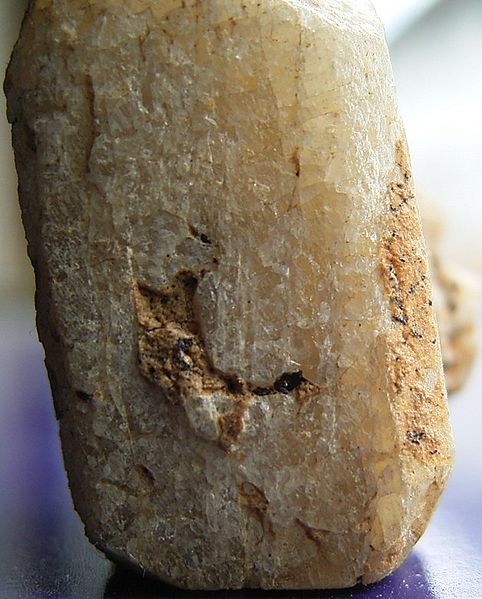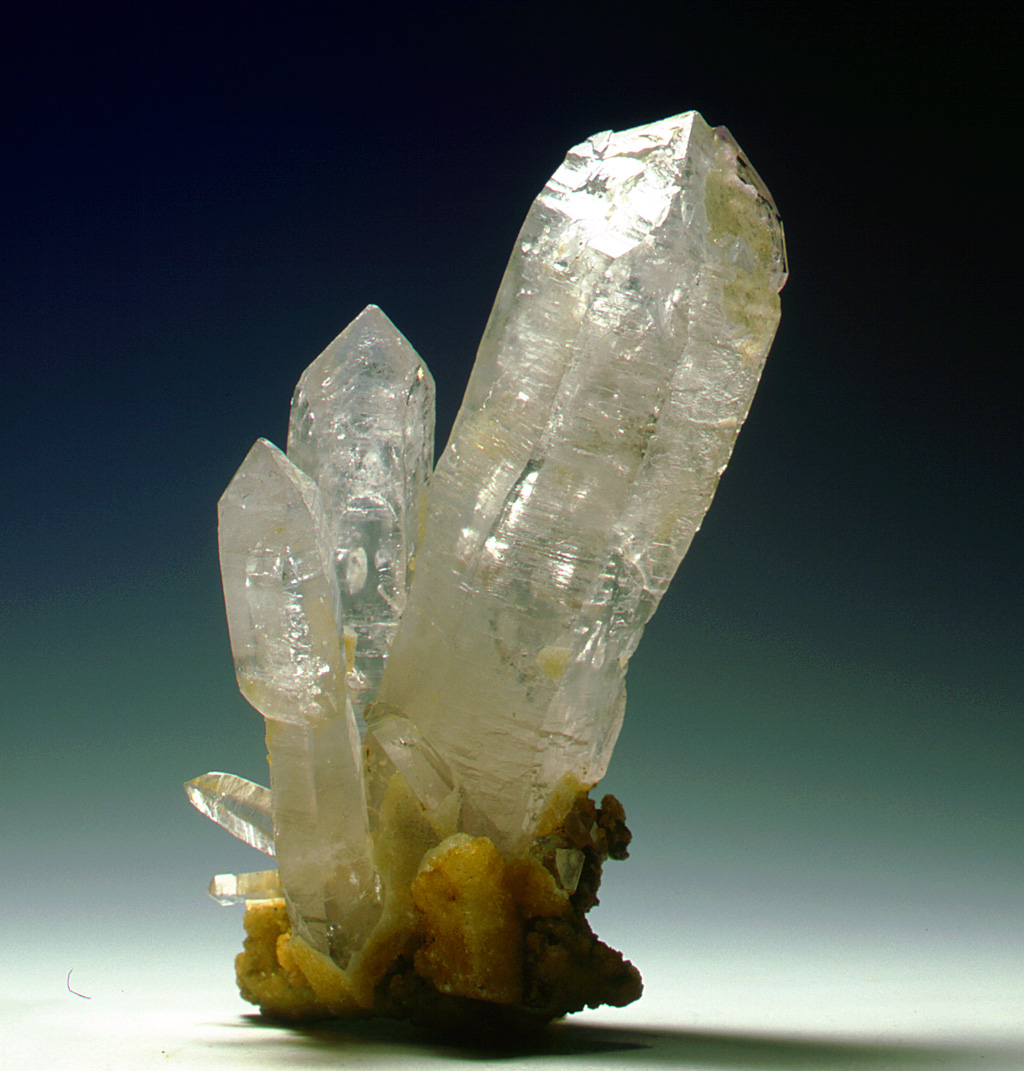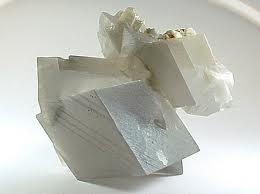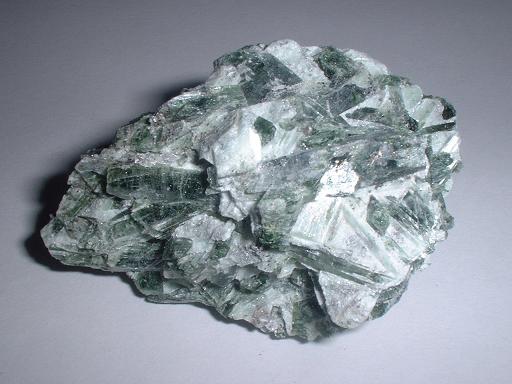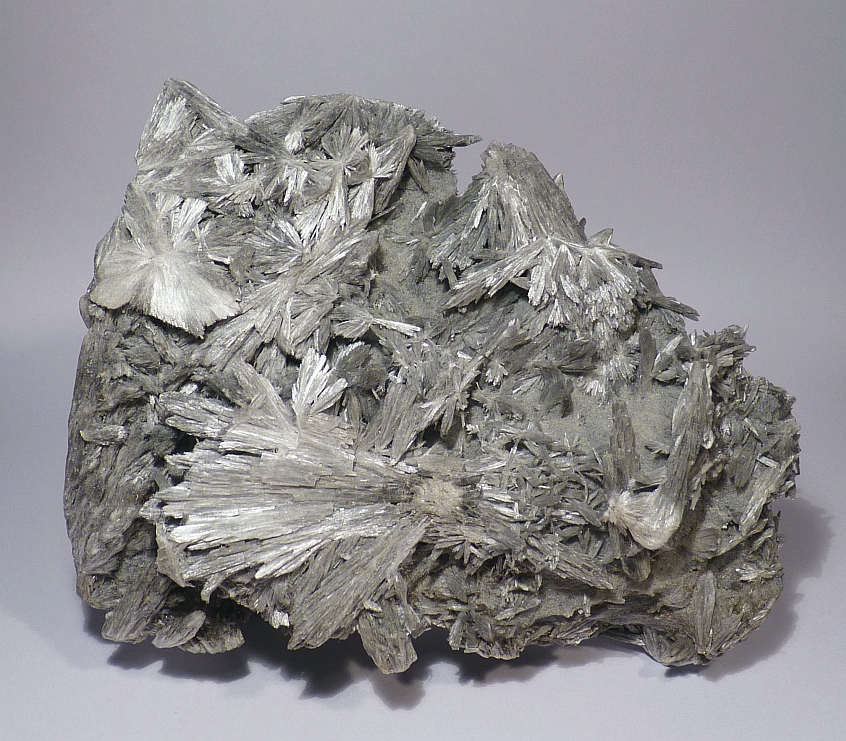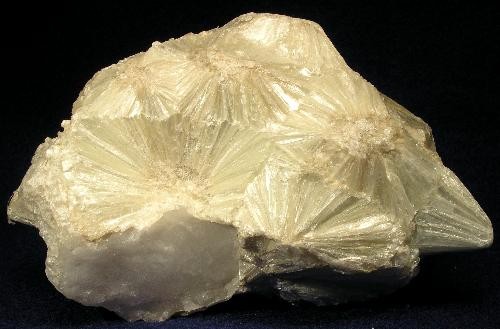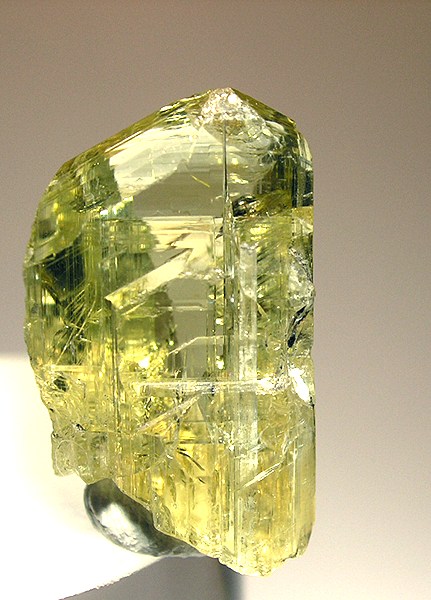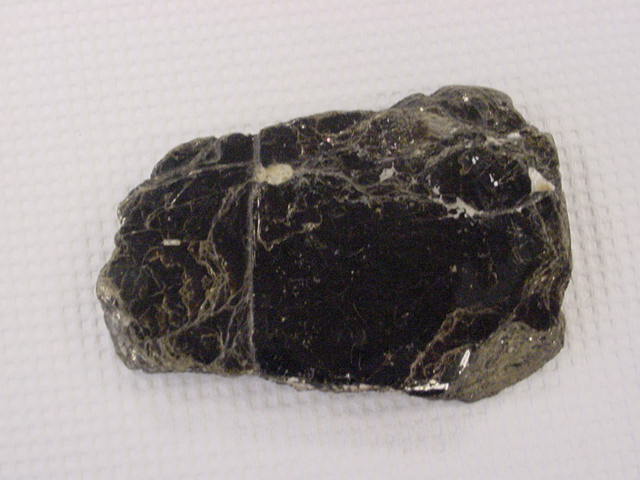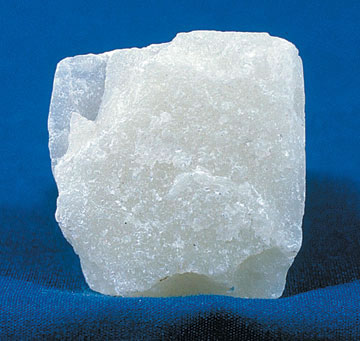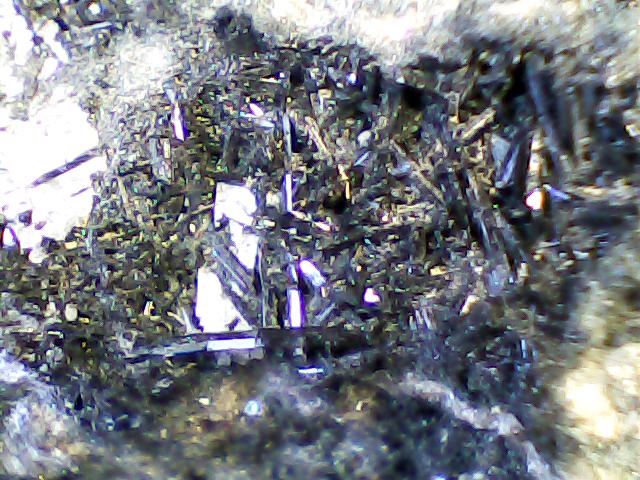Weathering processes form most of the minerals of sedimentary rocks. These processes are carried out by water, wind, ice, temperature variations and sun exposure. They deteriorate the rock, altering the original minerals into new forms. This alteration favors erosion, which creates particles of different size called clasts. Clasts are transported by wind, water, glaciers (which also take part to the erosion process). Eventually they are deposited in sedimentary basins where, with time, they become rocks during a process called diagenesis. Diagenesis is merely water expulsion from the sediment’s pores due to compaction under lithological load and precipitation of cement (calcite or silica) from pore water, which glues the clasts together.
Exposed to weathering, Pyroxenes such as the Diopside alter into a clay mineral called Chlorite, which contains its magnesiac part, while the calcic part becomes calcite. Orthoclase alters into the clay mineral known as Kaolinite and the potassium forms various chlorides. Even Plagioclase degrades into Kaolinite and the remaining quartz ends up into sandstones, while the sodium goes into the sea.
In simple words, weathering of Pyroxene and Plagioclase (basalt) yields quartz – a common constituent of sands – and clay minerals. Clay minerals are essentially composed by high-water-content Phyllosilicates such as Kaolinite (Al), Illyte (K), Chlorite (Mg,Fe) and Montmorillonite (Na,Ca). Calcium ends up into carbonates, potassium into chlorides, and sodium into the sea. Diagenesis transforms all these into sedimentary rocks.
If diagenesis processes go on with higher temperature and pressure (with increasing depth and/or tectonic load), beyond 300°C we enter the stage of metamorphism. Carbonate rocks are among the best magma chambers. A limestone melts at about 1500°C; under high temperature and pressure it metamorphosizes according to a process called blasthesis: the tiny calcite crystals restructure and join to form bigger ones, giving the rock the typical “saccharoid” look of crystalline limestone, commonly called “marble”. When a limestone reaches 600°C by magma contact, it generates the metamorphic inosilicate called Wallastonite, as calcium reacts with the magma’s silica to form Ca2Si2O6; in a dolomitic limestone, the magnesium would favor the formation of Diopside, as well as Tremolite or Actinolite if water is also present. Dolomite at 800°C generates Brucite Mg(OH)2, the mineral in the magnesiac tetrahedron sheets of the Phyllosilicates.
Metamorphism of limestones by contact with a magma (silica)
|
|
|||||||
| 600°C | 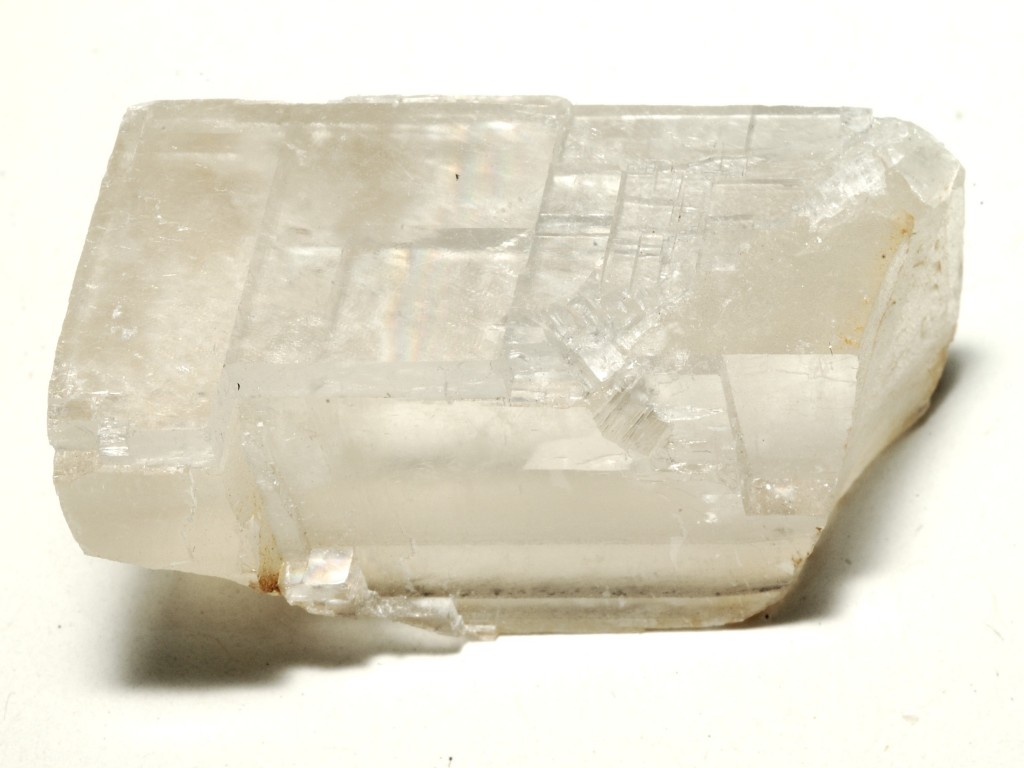 |
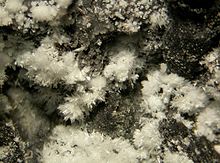 |
|||||
| CaCO3 | + | SiO2 | = | CaSiO3 | + | CO2 | |
| Calcite | Silica | Wollastonite | |||||
|
|
|||||||
Metamorphism of dolostones by contact with a magma (silica)
It is very interesting to see what happens to a typical carbonate rock such as a marl, which contains not only calcite (and maybe some dolomite) but also variable percentages of clay. Considering the most common clay minerals like Kaolinite and Chlorite, plus Calcite for the limestones we have:
Kaolinite at 400°C reacts with silica to form Pyrophyllite, which in turn reacts with calcite forming Zoisite, a sorosilicate from the Epidote group.
At 450°C, Muscovite, the white Mica, formed earlier through blasthesis processes (structural reorganization and fusion of potassic clay minerals), reacts with Chlorite to generate Biotite – or black Mica; the Al2SiO5 in excess forms Andalusite, Cyanite or Sillimanite, depending on P-T conditions. Aluminum silicates plus calcite will yield Zoisite.
At 480°C the magnesium, if any, is found in the phyllosilicate Talc and in the amphibole Tremolite.
At 500°C they’ve all become the pyroxene Diopside.
At the end there will be an association of Forsterite (olivine), Horneblende (amphibole) and Epidote (sorosilicate) – a chemical composition comparable to basalts.
Metamorphism of marls (Kaolinite and Chlorite + Calcite)
